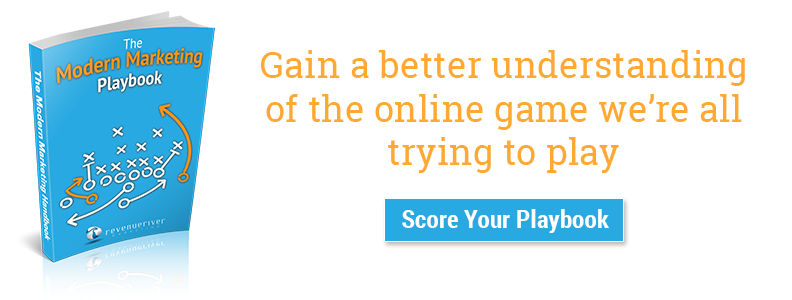

You've got a website. If you know what you're doing, your website isn't made with a 'build it and they will come' mentality; Your content people are writing their little hearts out, your advertiser is crushing it driving qualified traffic, your SEO is on point... but if all that traffic isn't converting, what is it doing?
Your visitors can browse, click, and watch all they want, but if they're not converting they're not becoming customers. No customers means no money in your pockets.
Let's take a look at why your website may not be converting:
1. Visitors are confused and can't find the conversion point
If your web visitors don't know what the main action they should take is, it's up to you to make that easy for them. On an eCommerce site, the main conversion point is typically a product purchase or checkout. On a B2B website, the conversion point may be a product demo or a contact us. Wherever the visitor goes on your site, you need to make it easy for them to convert.
There's a reason it is standard for an eCommerce site to have the shopping cart in the header. Anytime the user has the inclination to complete their conversion, it should be super easy for them to do so. This same methodology can be applied for other sites by including a call to action in the header.
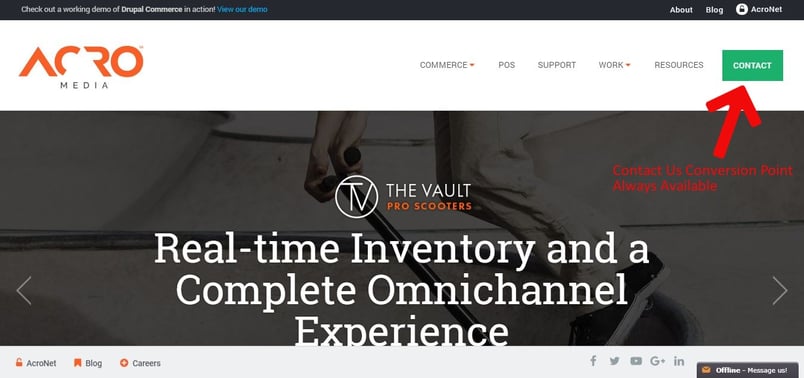
2. You're not answering the right questions
Your website's visitors typically have questions that they want answers to. They may want a products' full specs, other peer review information, or to know whether a service can help them achieve their goals. It's up to you to predict these questions and provide answers. If they still are looking for answers after all of this (and some definitely will), make it super easy for them to ask it to your team.
Size Chart to Answer Sizing Questions
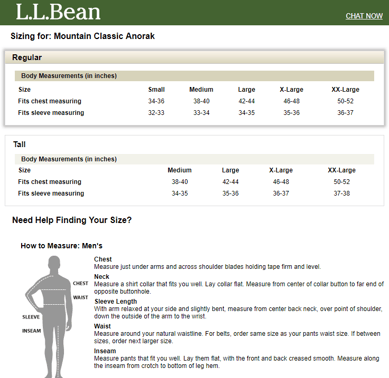
Product Details, Peer Reviews, and Option to Chat
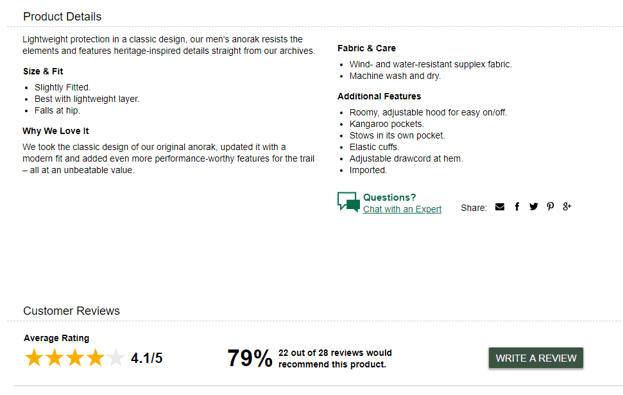
L.L. Bean does a great job of predicting questions that a visitor may have before purchasing one of their products. If you still have questions after reading reviews, checking the size chart, and reading the specs, you then have the option to start a chat. Out of all eCommerce marketing ideas, giving your customers the answers they're looking for should be at the top of your list.
In a B2B setting, this same approach can be applied to answer common questions and let the user see your product or service in action before reaching out.
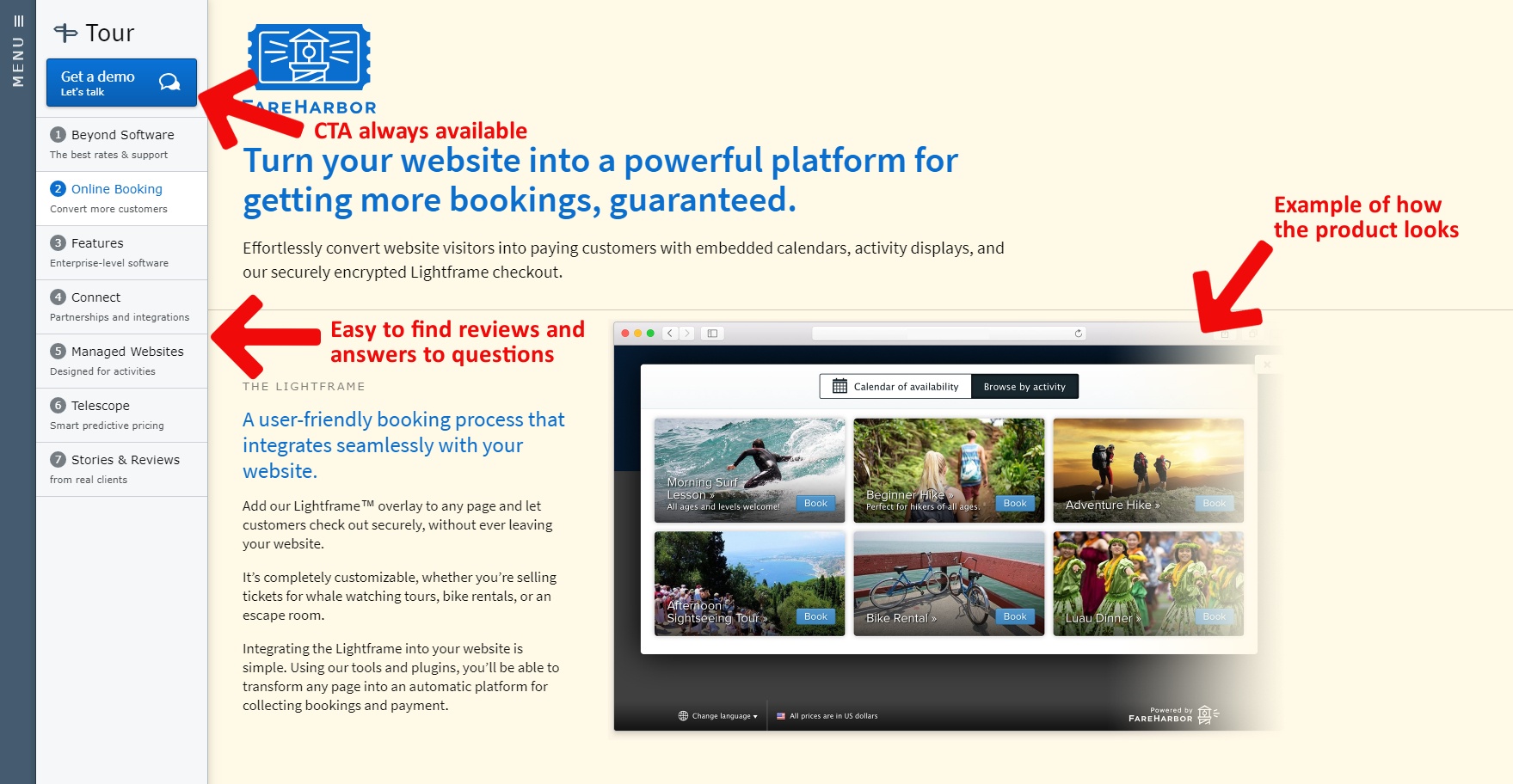
Beyond offering a demo, FareHarbor answers many common questions about their software on their "Tour" section and showcases how their product looks in action.
3. Your traffic isn't doing you any favors
If not a lot of people see your website, it's unlikely you'll get many conversions.
According to Statista, the average conversion rate for eCommerce brands is between 2.5% and 3%. In order to make just 3 sales, you'll need 97 other people browsing your site that aren't going to buy. Across all industries, the average conversion rate for a landing page is 2.35% (WordStream). If you want more conversions, you'll have to bring more traffic to your site.
But what can you do? Video content, pillar pages, and blog articles all ATTRACT people to your site and build the paths that Googlers can find you on. If you need a quick boost, branch out into paid advertising and get specific with who you're targeting and where you're sending them.
4. Lost on the road with no conversion path ahead
All roads lead to Rome, and all site pages should lead to a conversion point that you deem of high importance. Your site shouldn't have any dead ends; even your 404 page is an opportunity to draw your audience back in. Common conversion paths includes:
- A paid ad bringing a user to an informational page with a conversion point at the bottom.
- Offer tied to blog topic. A cohesive content strategy allows you to connect an applicable conversion point to a blog post or blog category.
- Educational opportunities. A resources section with clear steps on how to learn more (webinar, demo etc.) with a conversion point presented at the users' convenience.
Building a powerful conversion web machine does not happen overnight, or even within the first year. All your other digital marketing efforts including email campaigns, content strategy, and paid amplification, conversational marketing, are all essential parts to building traffic and conversions.
Here's the deal: you're a small fish in the vast internet sea. If you're not making it easy to convert, someone else is going to beat you to it. The vast majority of your visitors will not be ready, but you need to give them resources to bring them a step closer and simplify what it takes for them to pull the trigger.

